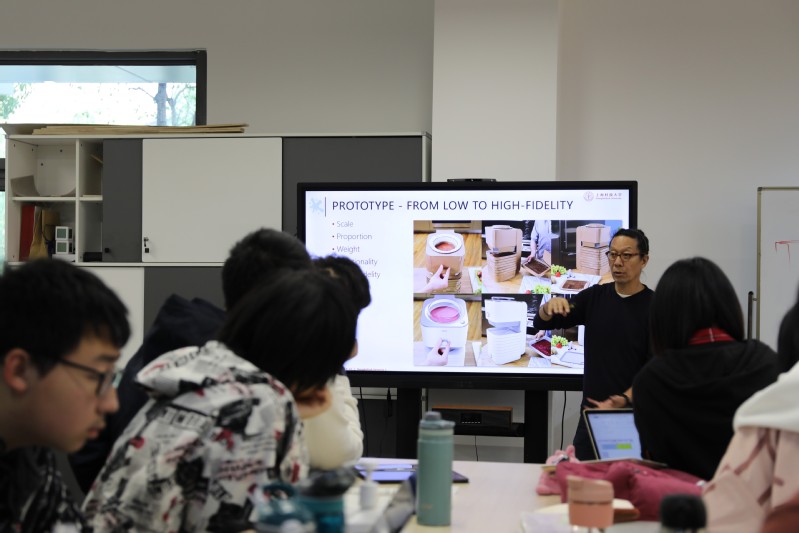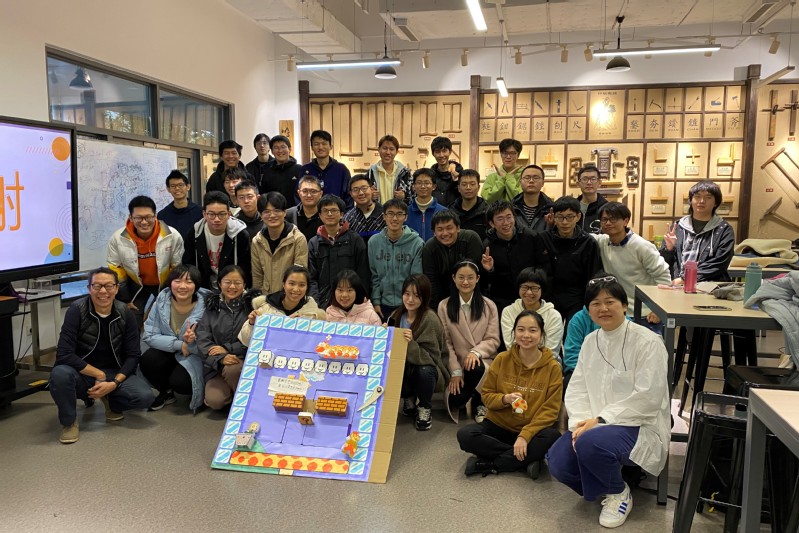Course introduction
This course is jointly taught by a team of professors from the School of Creativity and Art with design research and design development as the main research directions. The course takes creativity and innovation as the biggest driving force, and is committed to enabling students to use the methods and tools of design thinking to improve their ability to discover and solve problems; apply insight into various fields and establish a balance of dealing with multiple technologies and professional research content and integration; training teamwork and synergy skills.
Design thinking was put forward by Herbert Simon & Robert McKim in 1969, but it was not until David Kelley founded IDEO and Stanford D. school in 1991 that design thinking slowly came into the public view.
Instructor
Gu Mingde, Professor of School of Creativity and Art, executive director of LEAD Lab. Main research interests: product design, future design trend and practice, creative thinking.

What is design thinking?
A perceptual, empathic, intuitive thinking framework for identifying real problems and integrating innovative solutions.
Sensibility, empathy and intuition
Designers and their team think from all aspects (body, senses, cognition, emotion)
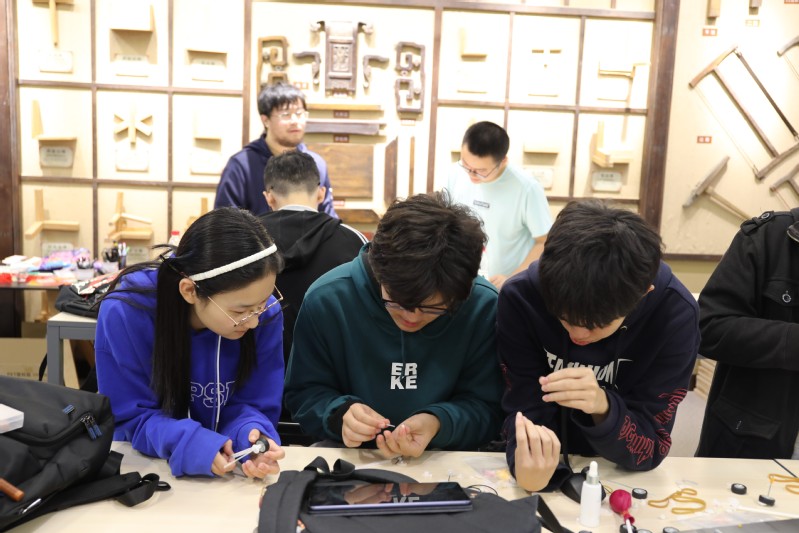
Thinking framework
A complete set of thinking process, thinking mode and thinking criteria
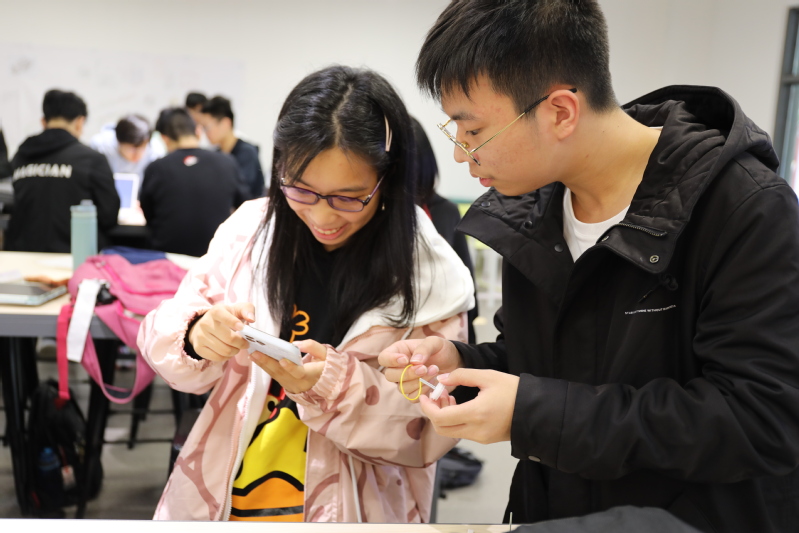
The real problem
Potential problems (not necessarily raised or obvious); The designer's job is to find out the real problem and define it
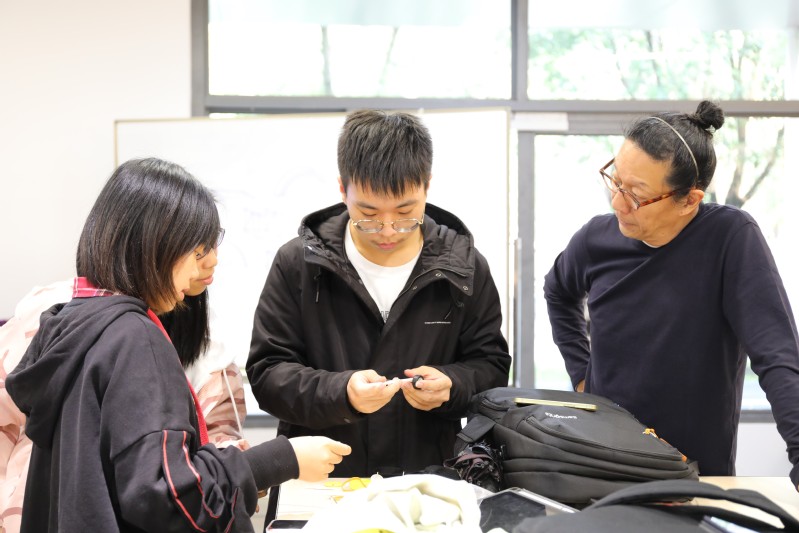
Solution
Economically, temporally and resourcefully feasible; Satisfactory in effectiveness, availability and experience
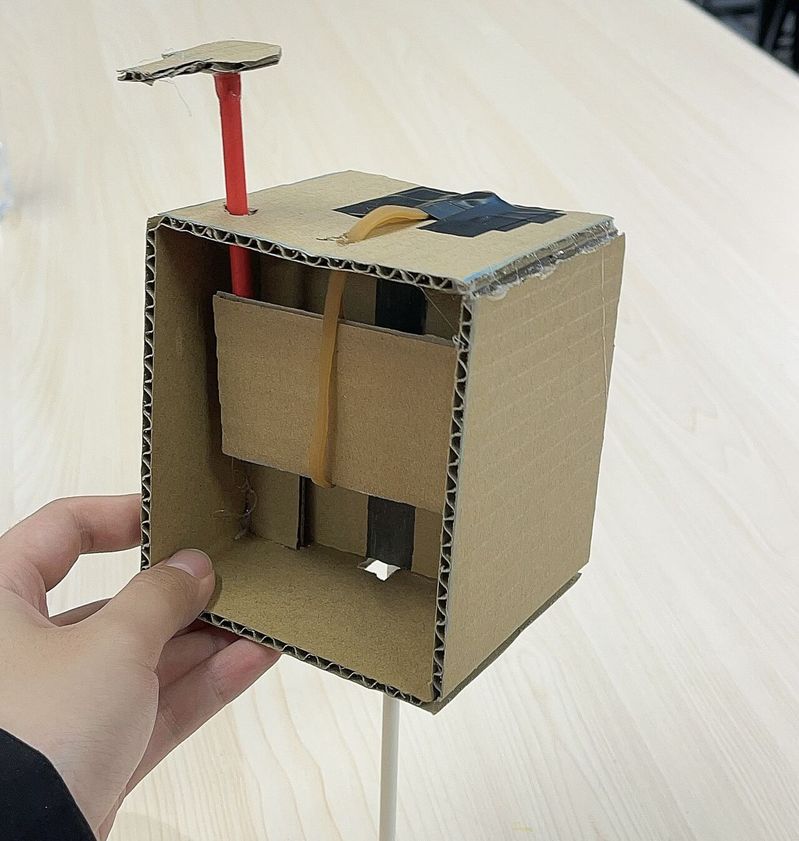
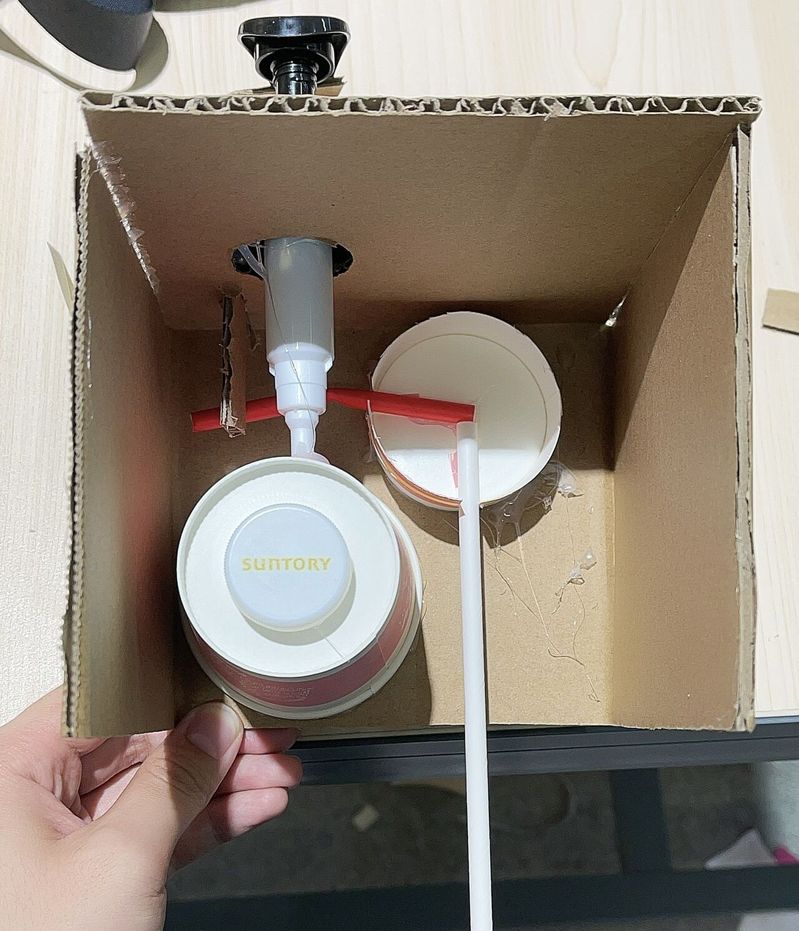
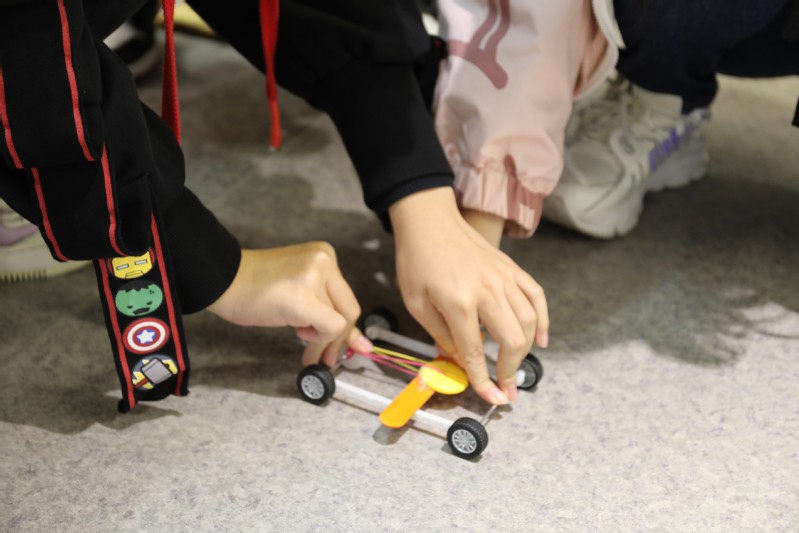
Four stages of design thinking
Discover user research phase
Take users as the center and understand users' needs through diversified research methods (methods include but are not limited to user interview, field survey, user experience, questionnaire, etc.). This stage helps designers think from the standpoint of users and find the real needs and pain points of users.
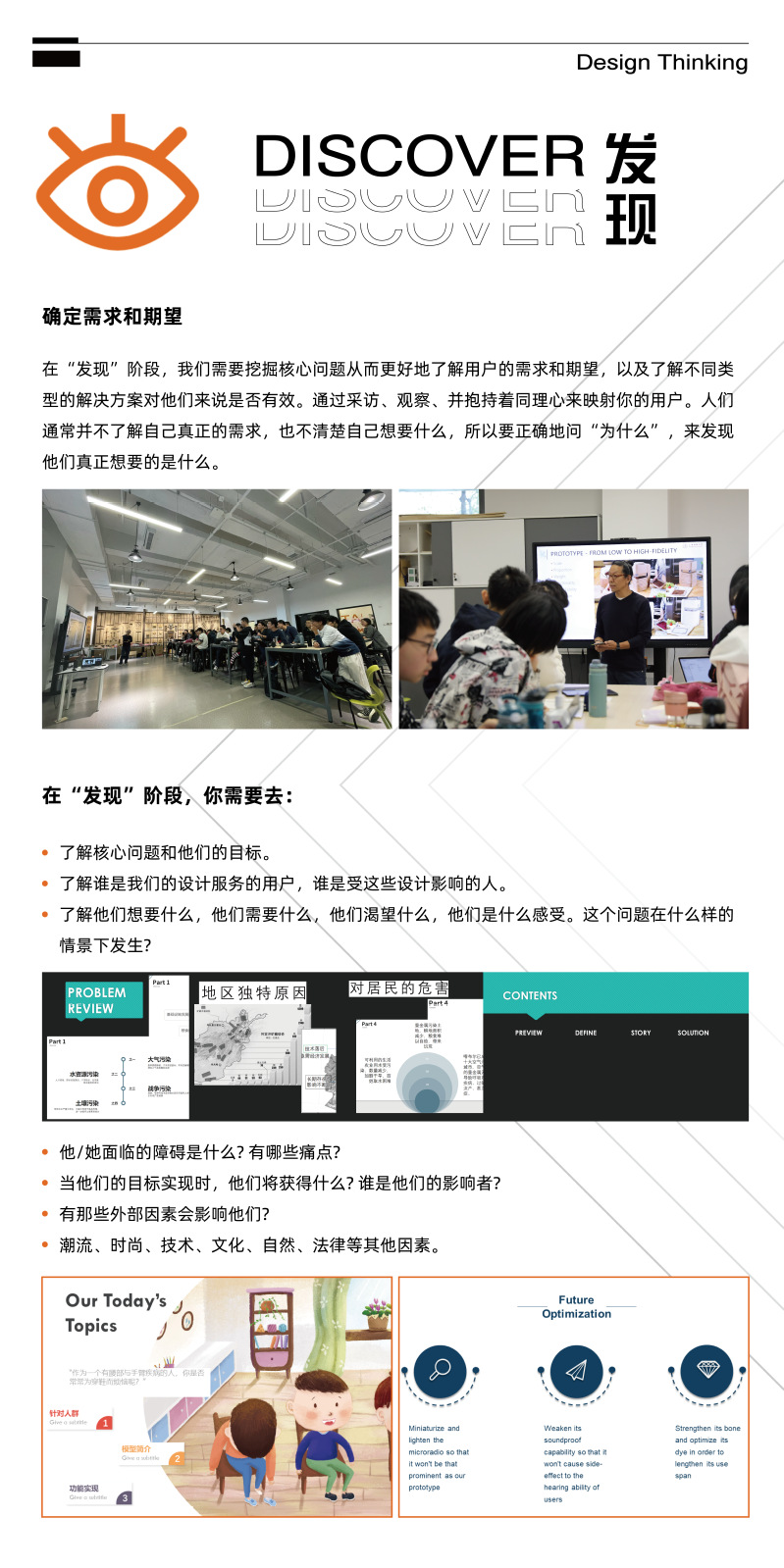
Define problem stage
Analyze and summarize the problems and information collected in the research stage, further analyze the deep-seated causes behind the problems and pain points, refine the key points and define the problems.
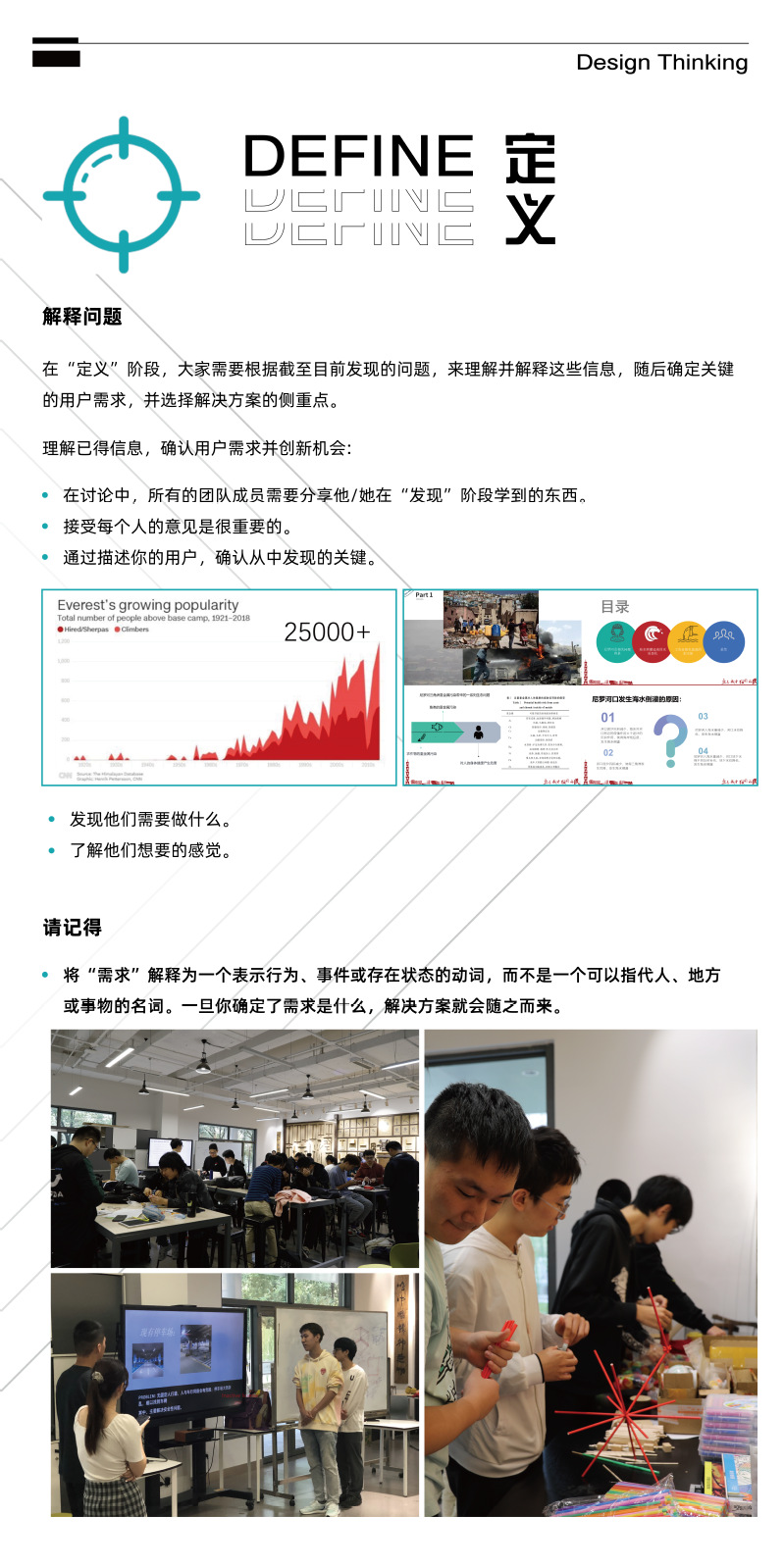
Ideate scheme conception stage
This stage begins to enter the problem-solving stage. First, through brainstorming, quickly visualize various problem-solving methods in your mind, refine feasible solutions, and then optimize and deepen them.
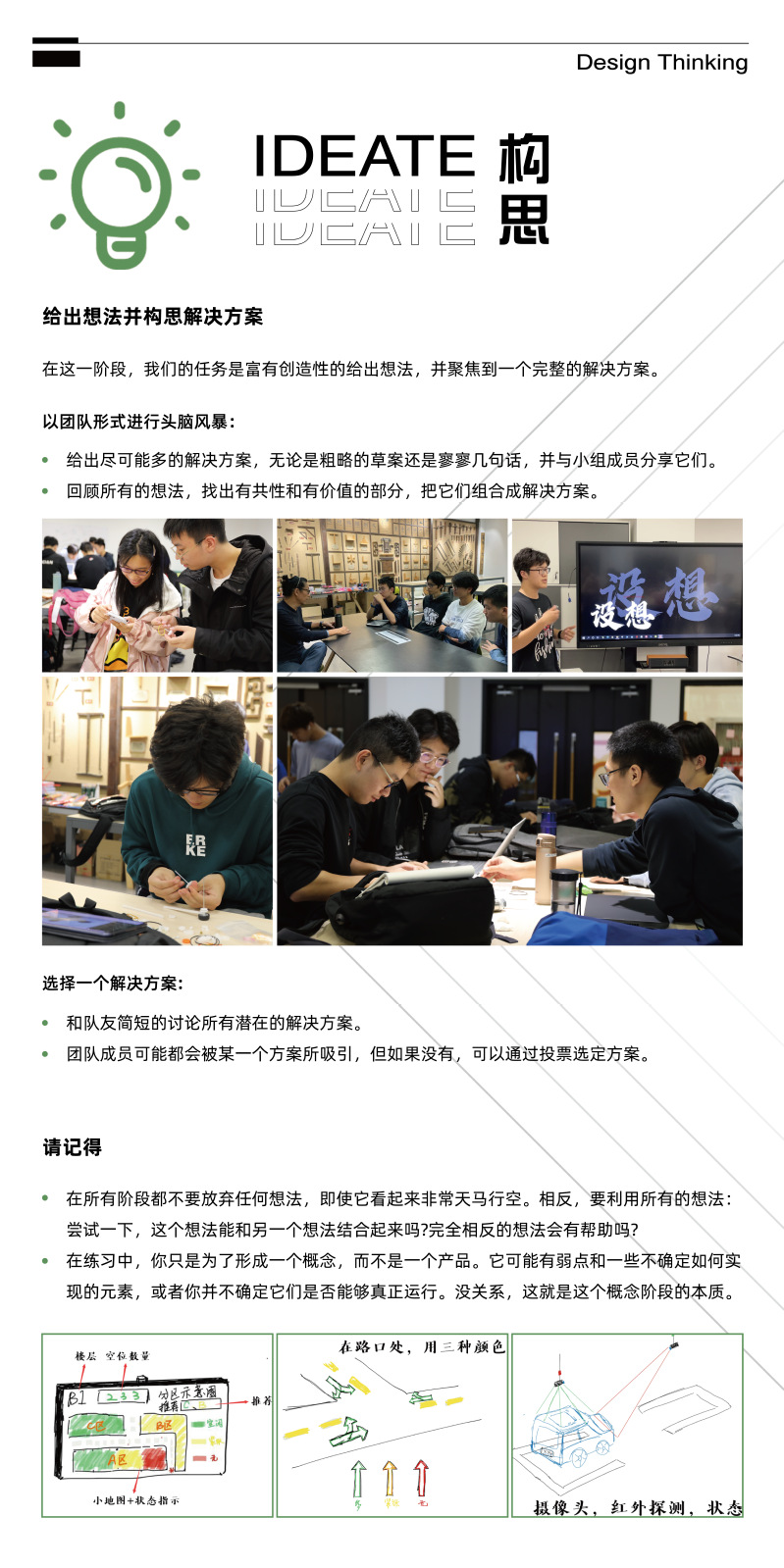
Prototype model production stage
The process of materializing the scheme and making the model is a process of hands-on thinking. In this process, the designer will understand the use and operation feasibility of the scheme and the feasibility of human factors engineering. After the model is made, the user will be invited to test, and the user will give feedback before adjusting the scheme.
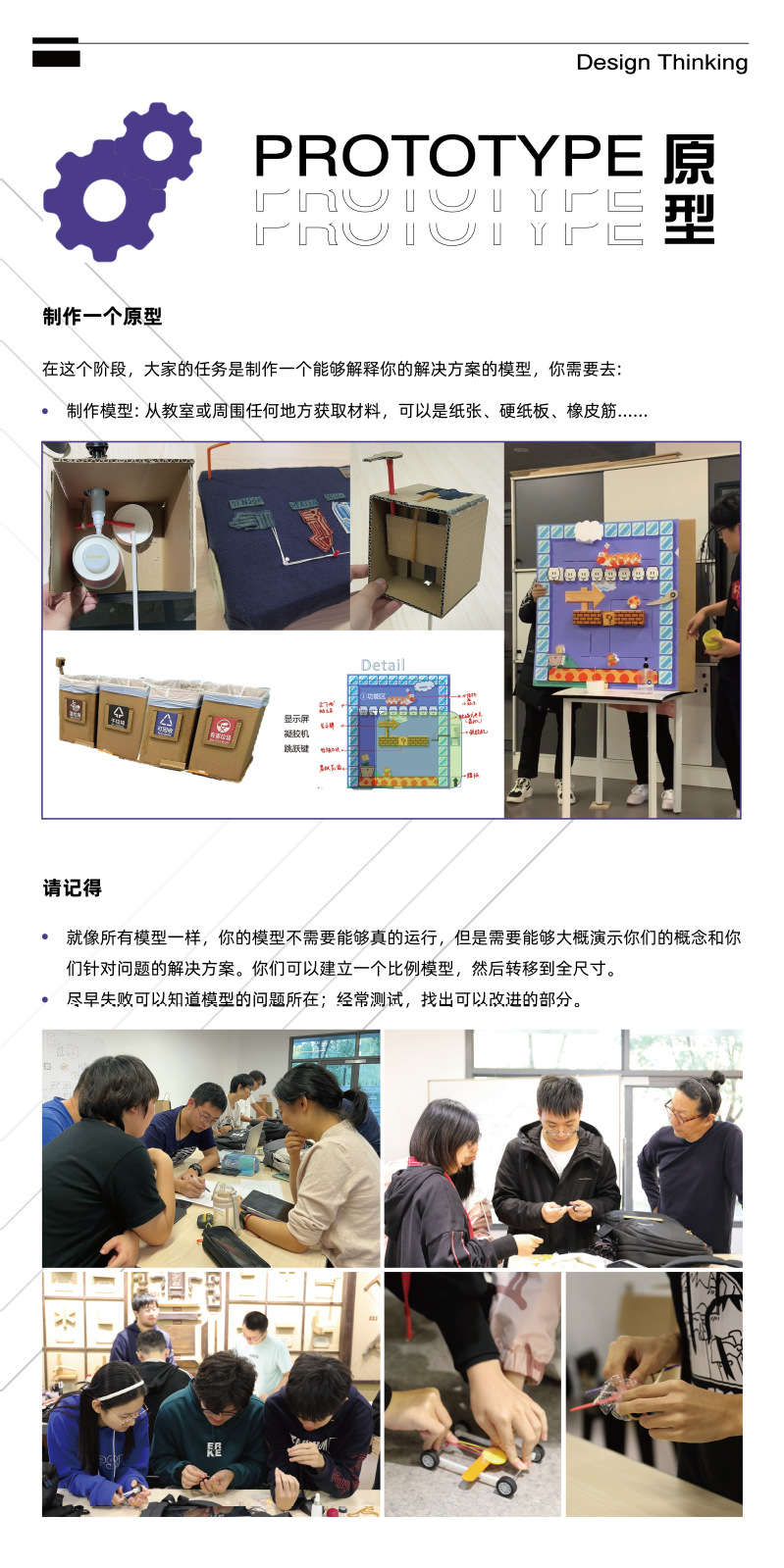
Student comments
As mentioned in the course, design thinking is not to make engineers become designers, but to make engineers better understand design. It can be seen from the above division of labor that I am still more like an engineer in the group. But the of design thinking really taught me how to make the technology in my hand better serve people, rather than drilling into the tip of an ox horn that ignores the user's playing technology.
---Yan Han
What impressed me most about the knowledge I learned in the course was industrial design. In the humble corner of daily life, it may be through industrial design. The first mock exam is to provide a unified template for the efficiency of the whole industry and the construction of supporting facilities. In different products, small design can provide special services for different groups, so as to expand their own market. These actually give me another different perspective to look at the world around me, so that when I put forward my suggestions on something, I can be more persuasive, and I can also find some design functions ignored by me in daily life, making life more convenient. The course of design thinking mainly exercises my practical ability and problem-solving ability when solving practical design problems, and gives me different perspectives on things.
---Xu Weilun
The study of the design thinking course participated in this semester was a surprise to the University of science and technology. I thought it would be a course that simply shared the design process, maybe just listening in class, but I didn't expect that we could have such a high degree of participation, communicating our ideas with our peers and teachers, and constantly broadening my thinking at the same time, Not rigidly adhere to the reality, but they are serving the reality. With the help of the persona and various methods taught by the teacher, find the specific problems to be solved, and find the most cutting-edge solution through multi angle comparison. After that, the model in the brain is transformed into the actual model in reality through their own hands. It may not be done so frequently from small to large, and then share their ideas with you. This is really a wonderful process. DT class really made me gain a lot, and I am very grateful to the teacher for bringing us these.
---Wu Chengtai
The course of design thinking gives me the greatest help, just as the name of the course says. In the first class of this semester, the teacher asked us, what's the reason why you came to this class? At that time, I gave a helpless answer: because this course is a compulsory course. But now I am very grateful that it has opened the door to a new world for me. Although it is only the tip of the iceberg of the design world, it is more like clarifying the concept of what is design. I used to think that all products, from creativity to realization, rely on the initial inspiration. I have never thought about the process, the application of ideas and the application of technology. In class, we gradually learned to find problems, determine the research direction, make models, put ourselves in the audience, and improve people's behavior in a more interesting way... I also realized that behind every small product, there may be a huge process, and any successful design is inseparable from these key steps. Good creativity is important, but the realization process of creativity is often more difficult. In the similar process in the future, the design thinking learned and opened in this course will let me know how to achieve the ultimate goal of designing a product step by step and orderly.
--Song Yulu
Before learning this lesson, I thought that design is a process of doing what I want, but now I feel that design has its rigorous thinking process and framework step by step. Discover requires me to have a pair of eyes to observe carefully in life, and learn empathy to discover people's various needs in life; When defining, I was most impressed by the fact that the survey number should learn to guess the psychology of the respondents and get valuable information; In idea, my favorite ones are fun theory and brain storm. In this process, our team felt great fun in the design; And working with my partners in prototype also makes me feel that design is a process of continuous revision.
---Liu Wenting
In the continuous class of design thinking class, I gradually realized the importance of discovering problems. The solution is based on the problems. Only by doing a good job of research, knowing the user scale, targeting the group, what the users want, and Issuing the design from the user's point of view is a good design. A good solution is produced with countless solutions. Brainstorm is very important. When the final direction is not determined, all possibilities should be considered. Do not directly deny the value of a solution because of some existing views. All possible paths should be laid out and analyzed one by one. In the exhibition part, I learned the importance of Empathy for the explanation of the scheme. Setting up a virtual and specific character to represent an audience group and tell his story is more meaningful. Through the design thinking class, I also saw many different designs and views of other people and other groups, which benefited me a lot. There are people outside, and we are always on the way of learning.
---Li Zhuoyuan
Professor's message
Design thinking is not exclusive to designers. All great creators in all walks of life are using it. The uniqueness of design thinking is that it can help us systematically solve various problems in the form of creative innovation. The original intention of design thinking is to teach engineers to understand design and how to communicate with designers. Its purpose is not to train engineers to become designers, but to re-examine the creativity in life, strengthen the observation and definition of practical problems in life and put forward solutions.
